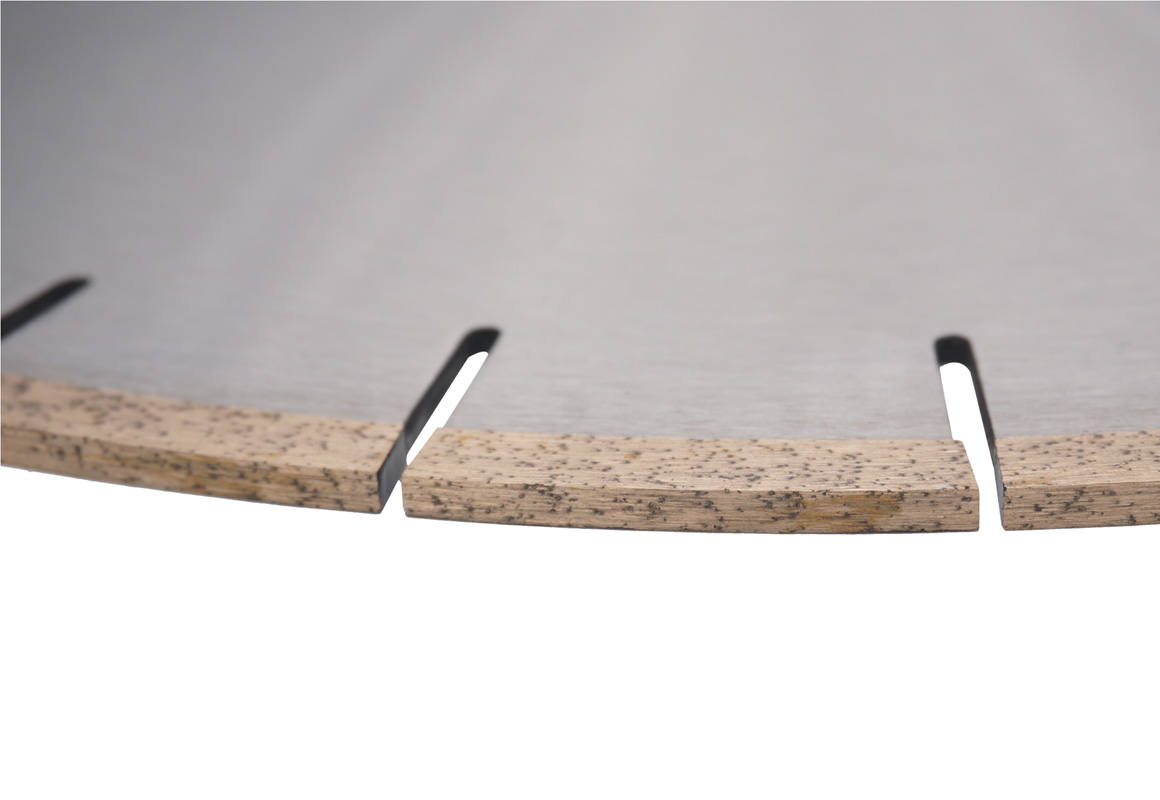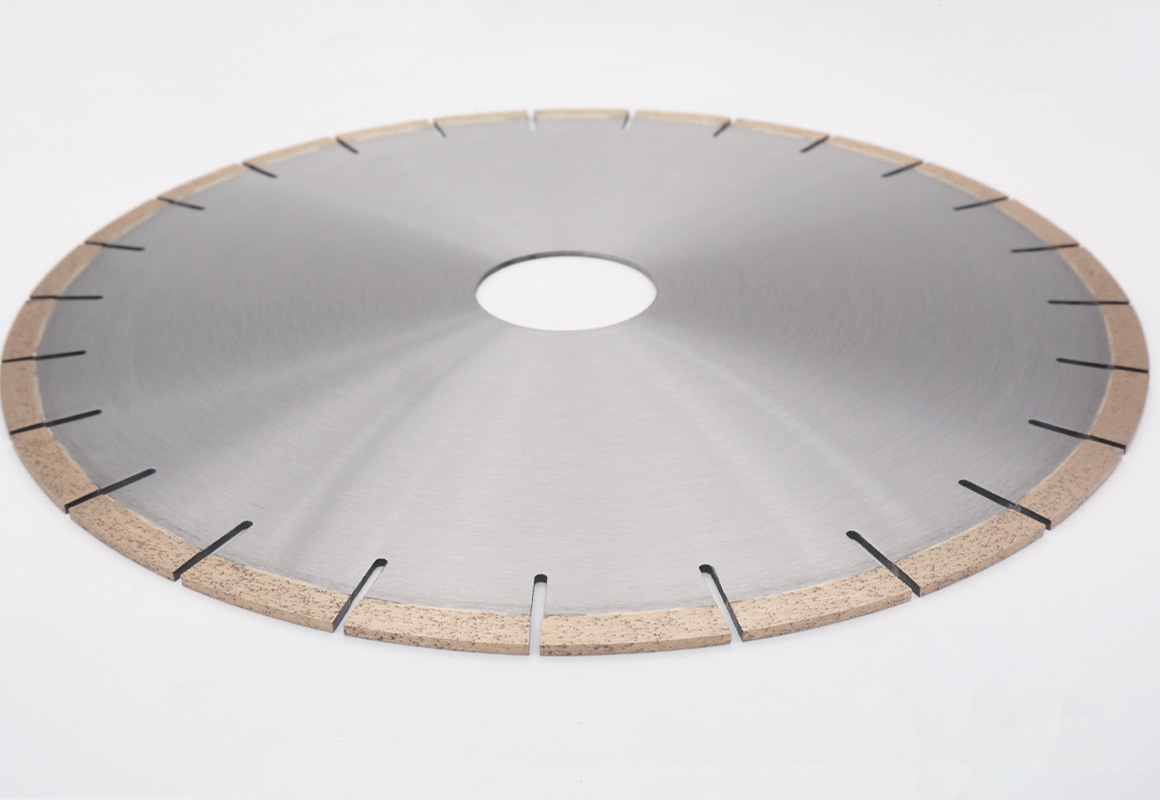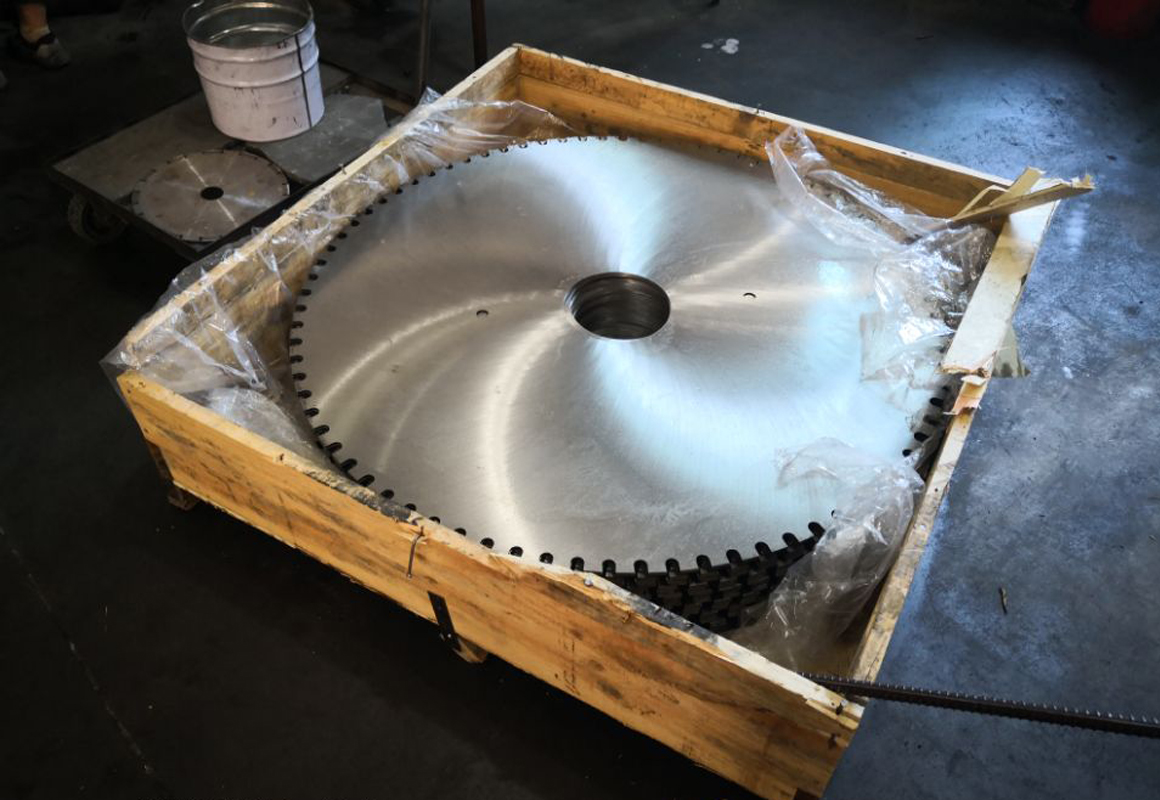Factors affecting the efficiency and life of diamond circular saw blade
The factors that affect the efficiency and life of diamond circular saw blade are cutting process parameters, diamond particle size, concentration, bond hardness and so on. The sawing energy includes the linear speed of saw blade, sawing concentration and feeding speed.
1, Sawing parameters
(1) Saw blade linear speed: in practical work, the linear speed of diamond circular saw blade is limited by the equipment conditions, saw blade quality and the nature of the stone to be sawed. In terms of the best service life and cutting efficiency of the saw blade, the linear speed of the saw blade should be selected according to the nature of different stones. When sawing granite, the linear speed of saw blade can be selected in the range of 25m-35m / s. For granite with high quartz content and difficult to cut, the lower limit of the linear speed of saw blade is appropriate. In the production of granite tiles, the diameter of diamond circular saw blade is small, and the linear speed can reach 35m / s.
(2) Sawing depth: sawing depth is an important parameter related to diamond wear, effective sawing, stress of saw blade and properties of stone to be sawed. Generally speaking, when the linear speed of the diamond saw blade is high, a small cutting depth should be selected. From the current technology, the depth of cutting diamond can be selected between 1mm and 10 mm. Generally, when a large diameter saw blade is used to cut granite, the cutting depth can be controlled between 1mm and 2mm, and at the same time, the cutting speed should be reduced. When the linear velocity of diamond circular saw blade is large, a large cutting depth should be selected. However, when the performance of the saw and the strength of the cutting tool are within the allowable range, the cutting concentration should be as large as possible to improve the cutting efficiency. When the machining surface is required, small depth cutting shall be adopted.
(3) Feed speed: the feed speed is the feed speed of the stone being sawed. Its size affects the sawing rate, the force on the saw blade and the heat dissipation in the sawing area. Its value should be selected according to the nature of the stone to be sawed. Generally speaking, the cutting speed of soft stone, such as marble, can be increased properly. If the cutting speed is too low, it is more conducive to improve the cutting rate. If the cutting speed is too low, the diamond edge is easy to be polished. However, when sawing the granite with coarse grain structure and uneven hardness, the cutting speed should be reduced, otherwise the vibration of the saw blade will lead to diamond fragmentation and reduce the cutting rate. The cutting speed of sawing granite is generally selected in the range of 9m-12m / min.
2,Other influencing factors
(1) Diamond granularity: the commonly used diamond granularity is in the range of 30 / 35-60 / 80. The harder the rock is, the finer the grain size should be selected. Because under the same pressure, the finer and sharper the diamond is, the better it is to cut into the hard rock. In addition, generally large-diameter saw blade requires high sawing efficiency, so it is better to select coarse grain size, such as 30 / 40, 40 / 50; small-diameter saw blade has low sawing efficiency, and requires smooth rock sawing section, so it is better to select fine grain size, such as 50 / 60, 60 / 80.
(2) segment concentration: the so-called diamond concentration refers to the density of diamond distribution in the working layer matrix (that is, the weight of diamond contained in unit area). According to the specification, the concentration of 4.4 carat diamond per cubic centimeter of working matrix is 100%, and that of 3.3 carat diamond is 75%. The volume concentration represents the volume of diamond in the agglomerate, and it is specified that the concentration is 100% when the volume of diamond accounts for 1 / 4 of the total volume. Increasing diamond concentration can prolong the life of saw blade, because increasing diamond concentration can reduce the average cutting force of each diamond. However, increasing the depth will inevitably increase the cost of the saw blade, so there is a most economical concentration, and the concentration increases with the increase of the cutting rate.
(3) Hardness of cutter head binder: Generally speaking, the higher the hardness of binder, the stronger its wear resistance. Therefore, when sawing the rocks with high abrasiveness, the hardness of the bond should be high; when sawing the soft rocks, the hardness of the bond should be low; when sawing the rocks with high abrasiveness and hard, the hardness of the bond should be moderate.
(4) Force effect, temperature effect and grinding damage: in the process of cutting stone, diamond circular saw blade will be affected by centrifugal force, sawing force, sawing heat and other alternating loads. Due to the effect of force and temperature, the diamond circular saw blade is damaged.
Force effect: in the process of sawing, the saw blade is subject to axial force and tangential force. Due to the force in the circumferential direction and radial direction, the saw blade is wavy in the axial direction and disc in the radial direction. These two kinds of deformations will result in the unevenness of rock section, the waste of stone, the noise and vibration during sawing, the early damage of diamond agglomeration and the reduction of the lifespan of saw blade.
Temperature effect: according to the traditional theory, the influence of temperature on the saw blade process is mainly manifested in two aspects: one is to lead to the graphitization of diamond in the caking; the other is to cause the thermal force between diamond and matrix and lead to the premature falling off of diamond particles. New research shows that the heat generated in the cutting process is mainly transferred into caking. The temperature of arc area is not high, generally between 40-120 ℃. However, the temperature of grinding point is relatively high, generally between 250 ℃ and 700 ℃. However, the coolant only reduces the average temperature of the arc region, but has little effect on the abrasive temperature. Such a temperature does not lead to carbonization of graphite, but it will change the friction performance between abrasive particles and workpieces, and cause thermal stress between diamond and additives, leading to fundamental bending of diamond failure mechanism. The research shows that the temperature effect is the most important factor to damage the saw blade.
Wear and tear: due to the stress effect and temperature, the saw blade will often wear and tear after being used for some time. The main forms of grinding damage are as follows: abrasive wear, local crushing, large area crushing, falling off, mechanical abrasion of bond along the cutting speed direction. Abrasive wear: the continuous friction between diamond particles and the type, it will have edge passivation into a flat surface, caused the loss of cutting performance,and increase friction. Sawing heat will make the surface of diamond particles appear graphitized thin layer, greatly reduce the hardness, and intensify the wear: diamond particle surface bearing
Under the alternating thermal stress and the alternating cutting stress, the fatigue cracks will appear and the parts will be broken, showing sharp new edges, which is a relatively ideal wear pattern; large area crushing: the diamond particles bear the impact load when cutting in and out, and the more prominent particles and grains are consumed prematurely; shedding: the alternating cutting force makes the diamond particles in the binder It is constantly shaken to produce looseness. At the same time, the abrasion of the binder itself and the heat of sawing soften the bond. This reduces the holding force of the binder. When the cutting force on the particles is greater than the holding force, the diamond particles will fall off. Either kind of wear is closely related to the load and temperature of diamond particles. Both of them depend on the cutting process and cooling and lubricating conditions.

.jpg)
Installation and use process of diamond circular saw blade
.jpg)
Diamond circular saw blade classification

The development of diamond saw blades

Five common diamond circular saw blades

Common process of diamond circular saw blade



 RETURN
RETURN

